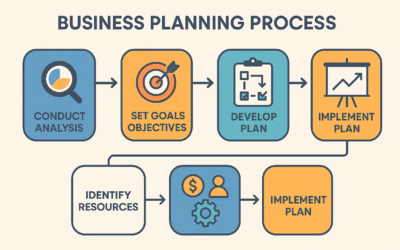One of the best ways to ensure you are creating a high-quality work environment is through employee empowerment. Employees who feel empowered within the workplace are more likely to increase their productivity and reduce turnover within the office.
Employee empowerment is described as the way companies supply their employee’s control in their day-to-day tasks. One of the key factors of this is allowing employees to make important decisions and to help them develop the correct decisions on their own.
Employee empowerment is commonly overlooked by management, despite its benefits and importance. Here’s what it’s all about and how you can make sure employee empowerment is evident in your workplace.
Employee Empowerment Explained
Employee empowerment is based on two factors, job enlargement, and job enrichment. Job enlargement is adding responsibilities to an employee’s job description, where job enrichment delegates employee’s new responsibilities that have traditionally been managed at higher levels of the organization.
Along with job enlargement and job enrichment, employee empowerment also stands for a variety of values implemented in the workplace. These can include training in new skills that are needed to take on new responsibilities, access to more information for correct decision making, and employee initiative.
Employees who have more autonomy are shown to be happier in their careers, which shapes the foundation of employee empowerment. Employee empowerment means giving up some of the power once held by management and replacing it with new roles and responsibilities in higher-up positions.
This doesn’t excuse management from accountability and responsibilities. Employee empowerment is built on mutual trust and clear agreements about responsibilities and boundaries.
How to Implement Employee Empowerment
Implementing employee empowerment can be done in a variety of ways, some being easier than others. If you want help to effectively use this approach within your workplace, consider reaching out to Global Resources. These common steps listed below may also be of aid.
- Set clear expectations
Having clear boundaries that employees are free to act within can help keep autonomy. Setting clear expectations without micromanaging is a fantastic way to allow your employees to make decisions while trusting them to do so correctly. While empowered employees will have autonomy, they will also be expected to abide by rules and expectations.
- Relinquish control
When completing tasks, employees are likely to do so differently than you would yourself. Accepting this when delegating responsibilities will allow them to take on new tasks without fear of being reprimanded for their methods. If tasks are fulfilled, getting from start to finish in one way or another won’t make a difference.
- Supply resources that are needed
When delegating new tasks to employees, they may still need aid and guidance as they navigate these responsibilities. Offering tools, resources, and support can help them adjust to new roles effectively. Guidebooks, written instructions, and verbal reassurance can go a long way. Be sure to create a space where others aren’t afraid to ask questions.

0 Comments